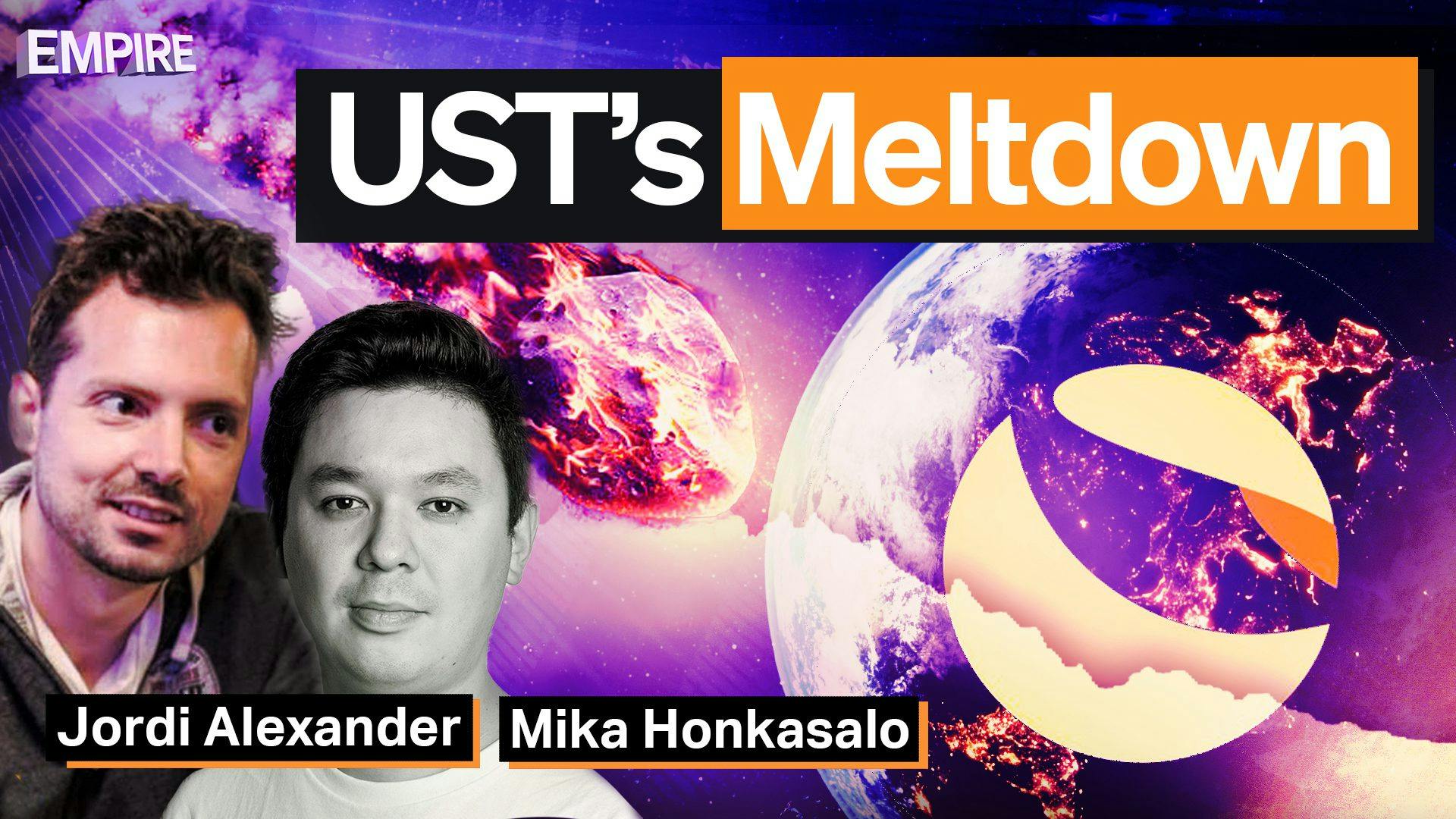Podcast: How did UST collapse? | Jordi Alexander & Mika Honkasalo
Jordi Alexander and Mika Honkasalo discuss the UST meltdown and the future of decentralized stablecoins.

Jordi Alexander and Mika Honkasalo join Jason on today’s episode of “Empire” to discuss the meltdown of UST, Terra’s stablecoin. The match was lit Sunday with UST de-pegging from one dollar, and it’s now become the single biggest wealth destruction event in crypto.
Jordi and Mika explain what led to UST’s demise, how this could have been prevented, and what’s in store for the future of UST and Terra. Is this the end of decentralized stablecoins? Can the market recover? Tune in to find out.
Plus, hear more on:
- Systemic effects
- Frax and Maker
- Arb opportunities
- The multiplier effect
- And so much more!
Check out what they had to say in the video below.👇
About the show
“Empire” is a twice-a-week show where we share the real crypto stories that aren’t heard elsewhere. On Mondays, Jason and Santiago Santos interview crypto industry movers and shakers to talk about their struggles, bold moves and tough decisions. Finish off the week with Friday’s weekly roundup episode that covers the top news and narratives of the week.
For any NPR or Guy Raz fans out there, you can think of “Empire” as a “How I Built This” for the bitcoin and crypto industry.
Subscribe to “Empire” today on Apple or Spotify. Watch episodes on YouTube.
Get the news in your inbox. Explore Blockworks newsletters:
- The Breakdown: Decoding crypto and the markets. Daily.
- 0xResearch: Alpha in your inbox. Think like an analyst.






